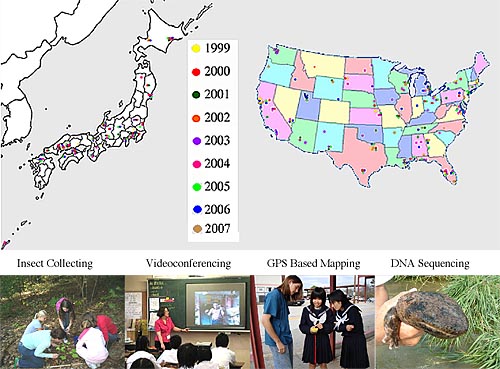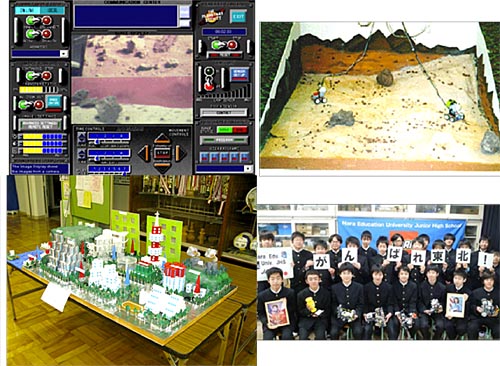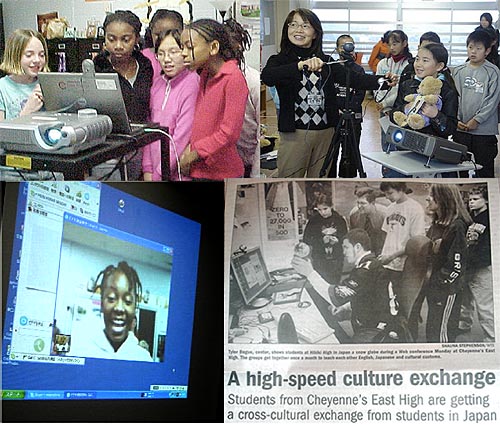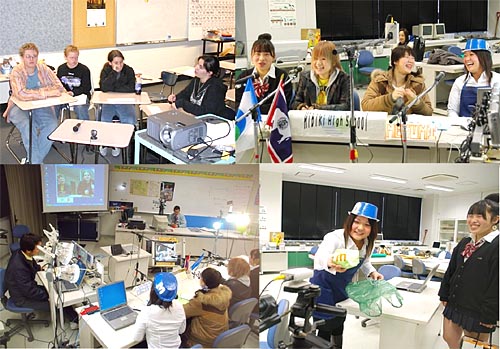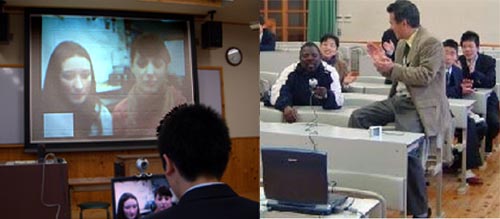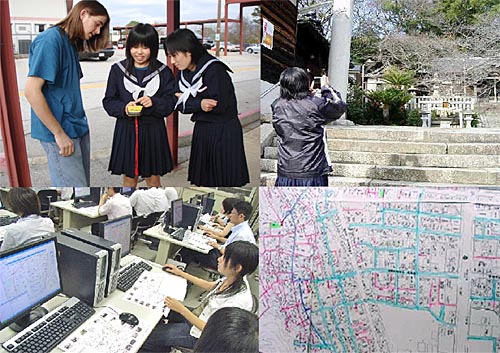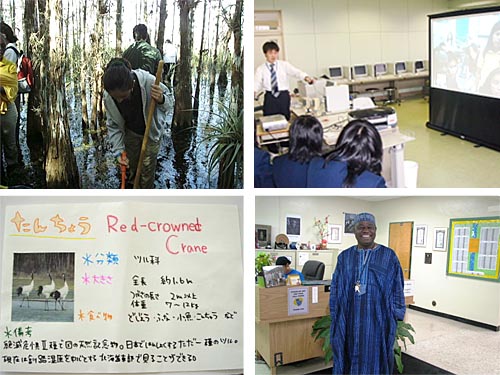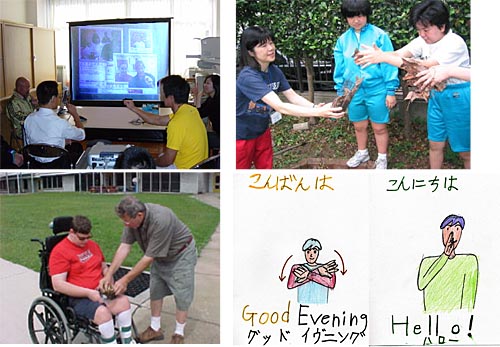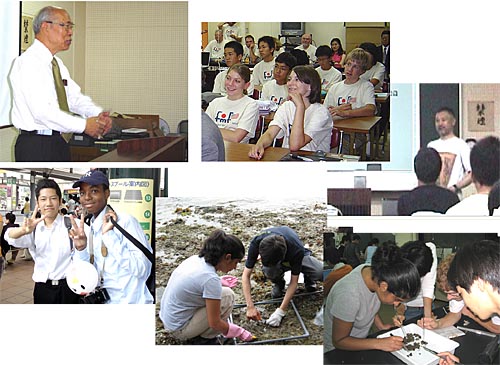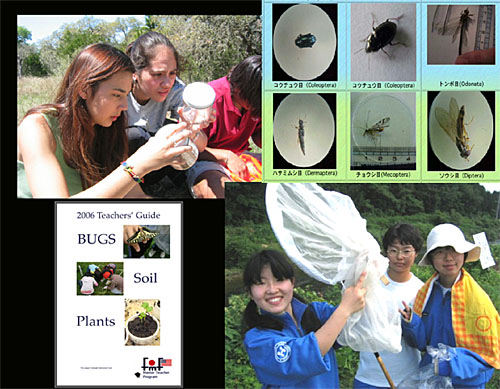
 |

For life to be worth living, one shouldn't aim simply to survive, one should aim to excel. This belief was the essential credo of the JFMF MTP. It inspires us now with the sense that we are not interested in merely providing disaster relief, we want to help communities to gain the will to recover and then exceed their past expectations. A Heritage of Excellence The Third Responders Initiative draws on the alumni of
the Japan Fulbright Memorial Fund Master Teacher Program (MTP) to
re-implement their ideas and practices in addressing the need for
redevelopment in Tohoku. The MTP pioneered the extensive and intensive
use of computers in creating a wide array of collaborative activities
involving students and teachers in the United States and Japan in
environmental and community development projects. They reached out
beyond the scope of the bilateral relationship to include activities
with schools in Rwanda, Mozambique and Tanzania. Schools in the Tohoku
region, particularly in the city of Kesennuma, played very active
roles in contributing to this outreach process. Now they are in need
of support so that they can return to this level of operations. The
following images and text give some sense of the standards we are
aiming for. The Scope of the JFMF MTP
Education Prepares for the Future Education lays the foundations
of the future in the minds of the young. It has to engage youths’ curiosity
and enthusiasm with things that might be, so as to enable them to
become adults whose aspirations take them beyond having to wonder
about what might have been. One way in which the MTP program did this
was through giving students the opportunity to creatively engage in
the consideration of alternative environments through the Lego Mars
Rover project and the Future City Competition. Videoconferences Technology played a central role in MTP activities. It
enabled program students in the United States and Japan to engage
in monthly Internet based videoconferences during which they reported
on their projects, shared language lessons and cultural experiences.
In many instances, this has led to enduring online friendships. Japanese Lessons Language lesson exchanges were an important part of the
MTP. One participant illustrated a lesson between Hibiki High School
in Kita Kyushu and East High School in Laramie, Wyoming with these
pictures, and said: “This time, they introduced the students
at East High School to phrases and words that could be used at a hamburger
shop. They spent a lot of time preparing small props for the skit,
which was fine since I knew that the students were taking the work
very seriously. For this videoconference, we used three cameras. The
first was for the ‘explainers,’ the second was used to
show the spelling and pronunciation of the phrases, and the third
was used to film the actors.” Extending the Scope of the Program in a Videoconference about Peace "The conference was about peace. A half dozen Japanese
students had written peace poems (in English!) and read them to us.
Luis was visiting from Mozambique and he sang us a peace song in his
native tongue before telling us about the civil war and weapons to
sculpture program (600,000 guns traded in for bicycles, sewing machines
and the like over the past few years).” - Jim McElroy, commenting
on an interaction between Shoreline High School in Tomales, California
and Ehime Matsuyama Technical High School in Japan that was part of
a link building process between Ehime and Mozambique. Using GPS and GIS Kainan High School students from Wakayama, Japan visited
Eureka Springs, Arkansas and learned GPS use. On their return, they
gathered data from throughout their city to create a GIS map of disaster
evacuation routes. "We were able to teach Tomoe and Yurie the
basics of GPS and GIS. Both girls felt more comfortable with the technologies
and seemed more confident about creating their maps that will cover
demographic data and evacuation routes. The girls got to practice
with the Trimble rover we lent them. We have copied ESRI-Japan so
they can continue to provide software assistance." Mila Floro,
East High School, Eureka Springs. Conserving the Natural Environment The use of pair-projects in the MTP helped to focus interest
on specific environment concerns such as the state of water use and
wetlands in the two countries. Students in Kushiro, Hokkaido explored
water quality and biodiversity in the Kushiro Wetlands National Park,
while students in Homestead, Florida investigated them in the Everglades.
The program also opened the doors to understanding Nigerian culture
through Homestead teacher Dr. Adwale Alonge. Engaging Differently Abled The Master Teacher Program had a fundamental emphasis
on improving educational opportunities – embodied its selection
criterion of "who will benefit most." Under this standard,
participant selection took place on the basis the impact that the
program would have on improving the lives and learning experiences
of those involved. It opened opportunities for participation by institutions
that normally have little or no opportunity for access to international
exchanges. The use of technology permitted differently abled students
in each country to share in common projects and to develop a mutual
interest in understanding the natural environment. The Collaborative School Science Network (CSSN) The CSSN project brought middle and high school students
from the U.S. and Japan together in exchange visits to each country
interspersed with collaborative research that they coordinated through
videoconferencing and other online exchanges. During their exchange
visits, they met and worked with leading scientist at national research
institutions. Their projects ranged from conducting the NaGISA survey
of marine life, depicted here, to sequencing the genes of the Japanese
giant salamander and the American Hell Bender salamander. As a result
of Rick Hernandez’s participation in MTP and CSSN, Niceville
High School in Niceville, Florida has taken the leading role in the
global expansion of NaGISA to developing countries. While the Bergen
Academy for the Advancement of Science and Technology in New Jersey
has continued its research and exchanges on genetics with Kokutaiji
High School in Hiroshima. BUGS - A Unifying Core Project The Japan Fulbright Memorial Fund Master Teacher Program
encompassed great diversity in its participants and provided opportunities
for unique experiences to each of them. It also provided a common
sense of identity through the engaging them in a common unifying project:
BUGS - Biodiversity Understanding Global Systems. This project was
a biodiversity survey that encouraged students to explore the ecosystem
and the interdependence of life through mapping out the diversity
of insect life in the areas near their schools. In the process, the
students learned to combine fieldwork, lab studies, and on-line collaboration
into a final presentation on their schools’ pair
projects. The Third Responder Initiative is taking a similar approach
to team building through the implementation of the Mapping Project.
About | On Community | Heritage | Map Project | Other Activities | What's New | Links | Feedback Copyright 2011 Third Responders |
